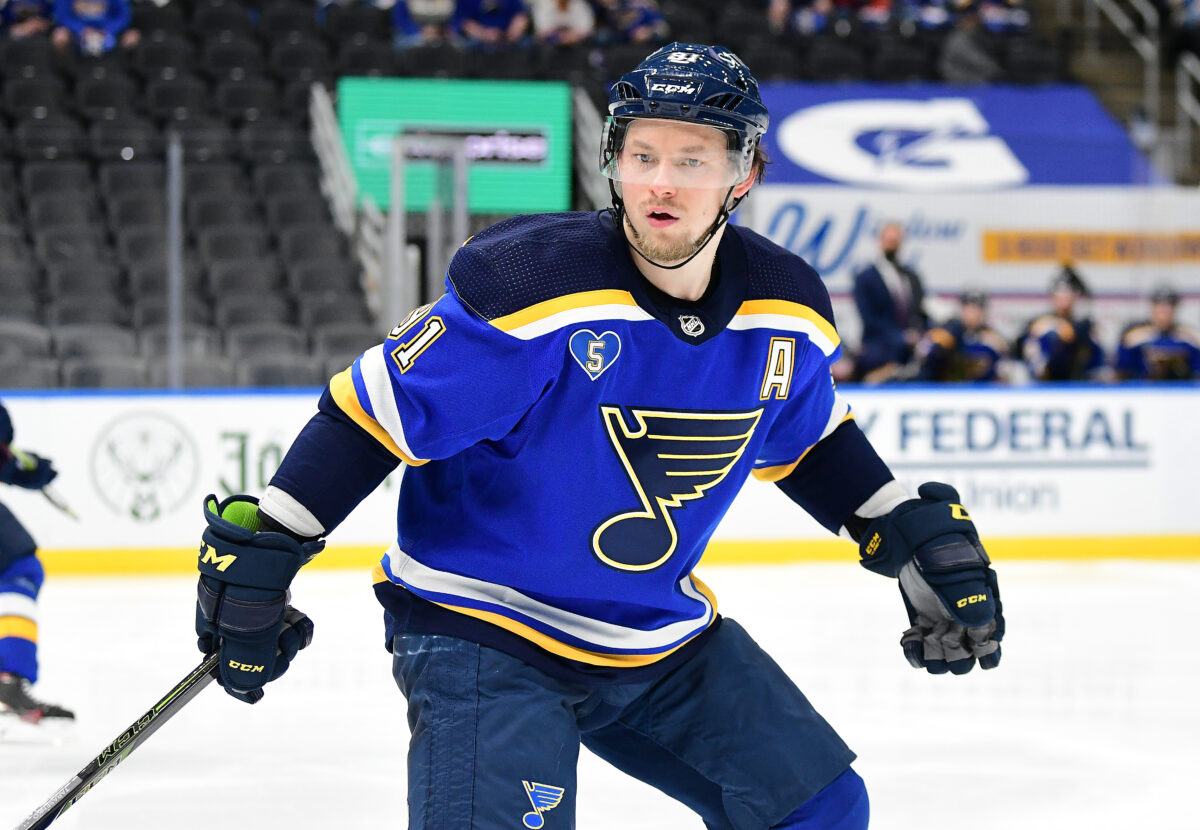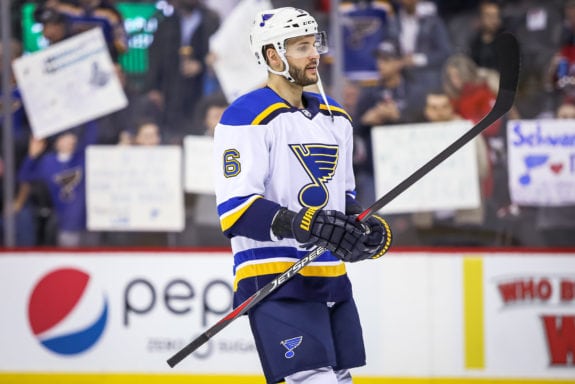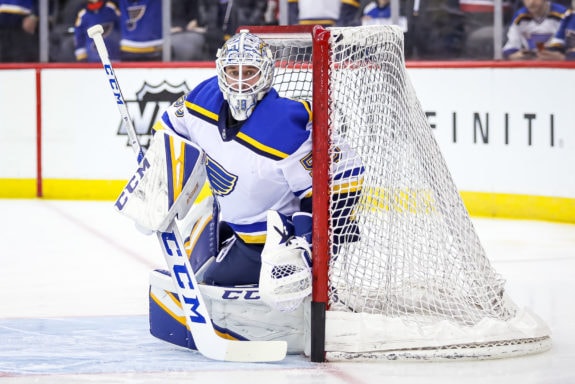The St. Louis Blues have a problem with the term of their contracts. Between recent signings and bad value deals with three or fewer seasons left, I created a list of worst value contracts based on production, term, and annual average value (AAV).
While these picks may be seen as controversial, I tried to be as fair as possible knowing that the reputation of Blues general manager Doug Armstrong is strong. Let’s take a look at the list of the Blues’ worst value contracts for the upcoming 2021-22 season.
Vladimir Tarasenko
As much of a fan favorite as Tarasenko has been, the last couple of seasons have been awful. Since the Stanley Cup victory in 2019, he has played a total of 42 games out of 137 that the team has played. The number of games includes the 10 playoff games the Blues have played in, against the Vancouver Canucks and Colorado Avalanche.
In the 42 games he’s played in, he has scored 26 points, with only nine of them being goals. Once known as a sniper, his goal-scoring has fallen off of a cliff after two additional shoulder surgeries.

To be fair, Tarasenko should have been traded by now, but training camp is approaching, and he remains on the roster. I’m surprised he hasn’t been dealt, I figured that Blues general manager Doug Armstrong would’ve cut ties by now.
One of the most fascinating decisions looming for the Blues is what line will we see Tarasenko play on. I expect he’ll play on the second or third line, his linemates could vary from Brayden Schenn to Robert Thomas, but he won’t slip into a fourth-line role with his $7.5 million cap hit.
If Tarasenko can get back to where he was before the surgeries, which is unlikely, the trade value will be high enough to get a solid deal. Tarasenko was a guaranteed 60 point player for five straight seasons, so you’d think there is still something there, the Blues must find it.
Marco Scandella
Scandella is another Blue whose play has taken a turn for the worse since the 2020 Edmonton playoff bubble. He signed an unnecessary extension with the Blues during the shutdown in April 2020, and while a cap hit of $3.275 million may not sound bad, it is a number that hurts the team on the back-end.
He and Colton Parayko don’t fit together, and haven’t for the most part, other than the honeymoon phase after the trade from the Montreal Canadiens. His metrics have gone downhill over his last 50-plus games for the Blues. He is billed as a defensive defenseman, he doesn’t produce points and his defense hasn’t been good either.

His “expected plus/minus,” an advanced statistic meant to measure his expected goals for and against, is a minus-6.7, which is the second-worst of his career. The number was worse in 2018-19 with a bad Buffalo Sabres team, as it was minus-12 then. The bottom line is that his defensive metrics have been bad, and he doesn’t fit in with the current group now.
The only reason why I can stomach that he’s playing nearly 20 minutes a night is that the Blues defensive unit is weak on the left-side after Torey Krug. But there are upcoming left-handed defenders coming up, we’ve seen flashes from Niko Mikkola, with Scott Perunovich and others on the way.
Let’s hope that Scandella can find what he had for the first month or so of playing for the Blues alongside Parayko. That is the only way that this contract can rebound from its current label of poor.
Jordan Binnington
This one is less extreme than the others based on availability and play, but Binnington has struggled to find his form since the bubble.
Even though I think he is the goaltender for years to come, the cap hit is a little much for my taste. As I mentioned, the term is part of the way that I evaluate these contracts, and he has this deal until the end of the 2026-27 season. He will be 33 years old when the contract expires, it’s not as bad as the Sergei Bobrovsky deal, but it’s a bit on the rich side.

His regular-season stats since the 2019 Cup win have been average, but his playoff stats have been horrendous. Blues fans may want to cover their eyes for these numbers, in his last nine playoff starts, his record is 0-9 with a save-percentage (SV%) of .875.
To give you a reference point, his 2019 playoff stats were a record of 16-10 and a .914 save percentage (SV%), much better and he may never reach those stats again.
In the regular season, despite seeing decent numbers, I’m still skeptical of him going forward. He ranked 27th in the NHL last season with a goals saved above average (GSAA) of 2.56, which is based on his goals prevented with his save percentage and shots faced versus the league average.
The Blues must hope that Binnington can return to form and he may be able to do so if we see a bounce-back season from the defensive unit in front of him.
Overview
It was difficult to find and define Blues contracts as poor value, they have a lot of mid-level value contracts, some of them have serious term issues. I can’t sit here and call contracts of players like Krug, Parayko, or Justin Faulk “bad value.” The reason is that they play every night, for the most part, and play huge minutes for the Blues.
The Blues will look to retool their cap structure within the next few seasons, despite having players like Schenn, Binnington, Parayko, and others locked in. The hope is that the NHL salary cap increases and we see ways for contenders like the Blues to make legitimate improvements. But that is all optimism that the league can bounce back quicker than expected from COVID.